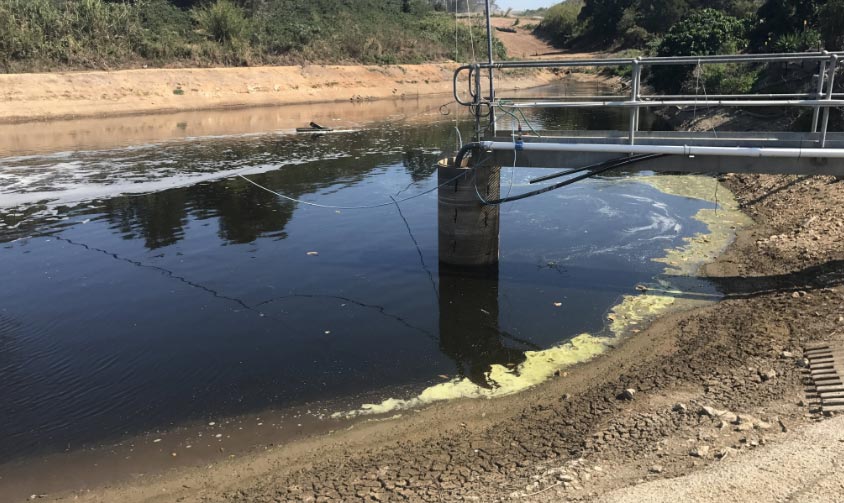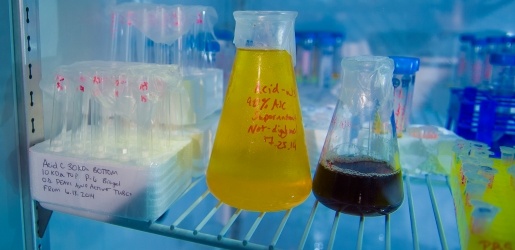Comprehensive Liquid Waste Disposal: Solutions for Houses and Organizations
Comprehensive Liquid Waste Disposal: Solutions for Houses and Organizations
Blog Article
Exactly How Liquid Garbage Disposal Works: A Detailed Overview of Methods and Technologies Used

Overview of Liquid Waste Types
The complexity of liquid waste types necessitates a detailed understanding of their features and implications for disposal. Fluid waste can broadly be categorized into several kinds, consisting of commercial, local, farming, and harmful waste. Each group displays unique buildings, calling for certain administration techniques to mitigate environmental and wellness threats.
Industrial fluid waste originates from manufacturing procedures and commonly consists of a variety of contaminants, such as heavy steels, solvents, and organic substances. Local liquid waste, mainly making up wastewater from families and business facilities, includes organic issue, nutrients, and pathogens (industrial wastewater treatment). Agricultural fluid waste, including runoff from ranches, may have plant foods, pesticides, and pet waste, positioning threats to water high quality and communities
Unsafe liquid waste is defined by its poisoning, sensitivity, or potential to trigger injury. Understanding these diverse liquid waste kinds is crucial for developing efficient disposal approaches and making sure compliance with ecological laws.
Physical Treatment Techniques

Testing is the preliminary step, where larger particles and debris are removed from the fluid waste making use of displays or grates. This procedure secures downstream devices from damage and guarantees smoother operation. Following screening, sedimentation makes use of gravitational pressure to different solids from liquids. In sedimentation tanks, heavier particles settle at the bottom, developing a sludge layer, while the cleared up liquid can be further treated.
Filtration is one more necessary technique that involves passing the liquid via permeable materials, such as sand or membranes, to catch smaller sized bits. This step boosts the high quality of the liquid, making it ideal for subsequent therapy processes.

Chemical Treatment Techniques
Chemical therapy techniques are crucial for successfully managing fluid waste, specifically in resolving dissolved and colloidal impurities that physical methods might not sufficiently get rid of. These techniques make use of various chemical representatives to counteract, precipitate, or change hazardous compounds right into less dangerous forms.
One typical approach is coagulation and flocculation, where chemicals such as alum or ferric chloride are included in advertise the gathering of suspended bits. This procedure enhances sedimentation, enabling less complicated removal of the resulting sludge. Furthermore, oxidation procedures, using agents like chlorine or ozone, are utilized to break down intricate natural compounds and you could look here microorganisms, providing the waste more secure for discharge or further therapy.
Neutralization is an additional crucial method, which readjusts the pH of acidic or alkaline waste streams to neutral degrees, preventing potential damage to downstream systems and the setting. Furthermore, advanced oxidation procedures (AOPs) make use of combinations of oxidants and ultraviolet light to break down relentless pollutants, achieving a higher level of therapy performance.
Organic Treatment Processes
Organic therapy processes play a crucial role in the administration of fluid waste by utilizing bacteria to disintegrate organic issue and lower pollutant degrees. These procedures can be broadly classified right into aerobic and anaerobic treatments, each using certain microbial neighborhoods to accomplish efficient waste deterioration.
Cardiovascular treatment involves making use of oxygen to promote the failure of organic materials by bacteria. This procedure is generally carried out in triggered sludge systems, where aeration tanks provide a helpful setting for microbial development, causing the oxidation of natural pollutants. The resultant biomass can be divided from dealt with effluent with sedimentation.
In comparison, anaerobic treatment occurs in the absence of oxygen, depending on different germs to break down raw material. This technique is particularly advantageous for high-strength waste, as it creates biogas, a renewable resource resource, while decreasing sludge manufacturing. Technologies such as anaerobic digesters are often employed in commercial and local applications.
Both anaerobic and cardio biological see this site therapies not only decrease the environmental influence of liquid waste yet likewise facilitate resource recovery, making them crucial elements of lasting waste administration approaches. Their adaptability, efficiency, and performance support their extensive execution across different fields.
Emerging Technologies in Disposal
Ingenious techniques to fluid waste disposal are quickly advancing, driven by advancements in innovation and an increasing emphasis on sustainability. Amongst these arising modern technologies, membrane bioreactors great post to read (MBRs) have gained grip for their capacity to combine biological treatment with membrane filtering, causing high-quality effluent that can be reused in different applications. MBRs allow smaller sized impacts and a lot more reliable procedures contrasted to typical systems.
Another promising development is making use of anaerobic digestion integrated with nutrient recuperation technologies, which not only treats fluid waste but likewise generates biogas and recovers useful nutrients like nitrogen and phosphorus. This double benefit enhances resource efficiency and reduces ecological influence.
Additionally, advanced oxidation procedures (AOPs) are being taken on for the destruction of complicated organic contaminants. These methods utilize effective oxidants and stimulants to damage down pollutants at the molecular level, supplying a very efficient service for challenging waste streams.
Moreover, the assimilation of fabricated knowledge and artificial intelligence in waste management systems is maximizing operational efficiency and anticipating maintenance, leading to lowered expenses and improved ecological compliance. These technologies mirror a considerable shift in the direction of more lasting and efficient liquid garbage disposal methods.
Conclusion
Finally, effective fluid waste disposal demands a thorough understanding of different techniques and modern technologies. The integration of physical, chemical, and organic treatment approaches makes sure the efficient monitoring of diverse waste kinds. Moreover, the development of innovative modern technologies improves treatment effectiveness and advertises sustainability in waste monitoring methods. By continually advancing these methods, it becomes feasible to resolve the growing difficulties related to liquid waste, eventually adding to environmental management and source recovery.
Liquid waste disposal is a critical aspect of environmental management, needing a detailed understanding of numerous strategies and modern technologies tailored to different waste types. Liquid waste can broadly be categorized into several types, including industrial, municipal, agricultural, and harmful waste. Agricultural liquid waste, including overflow from farms, may include fertilizers, pesticides, and animal waste, posing risks to water quality and communities.
Various physical treatment methods play a crucial role in managing fluid waste properly - industrial wastewater treatment.In verdict, reliable fluid waste disposal requires an extensive understanding of various strategies and modern technologies
Report this page